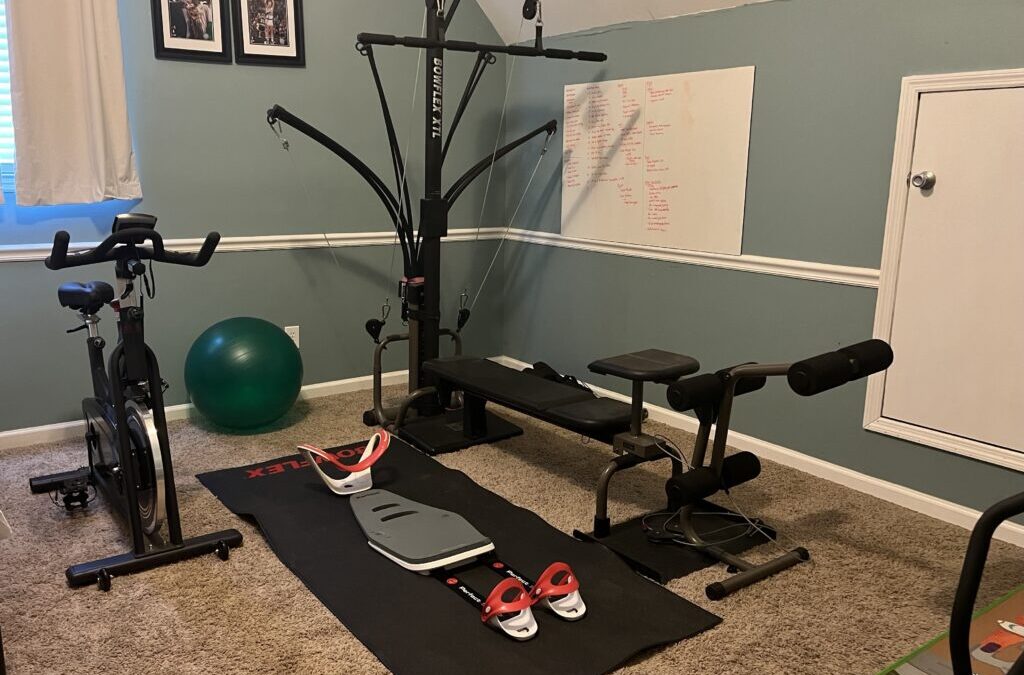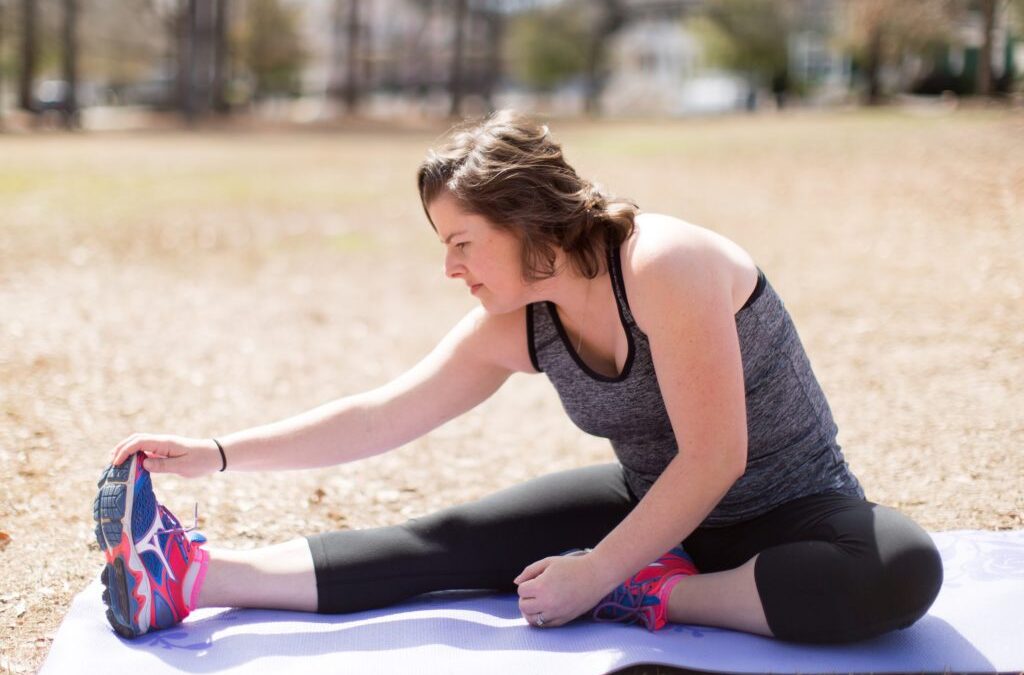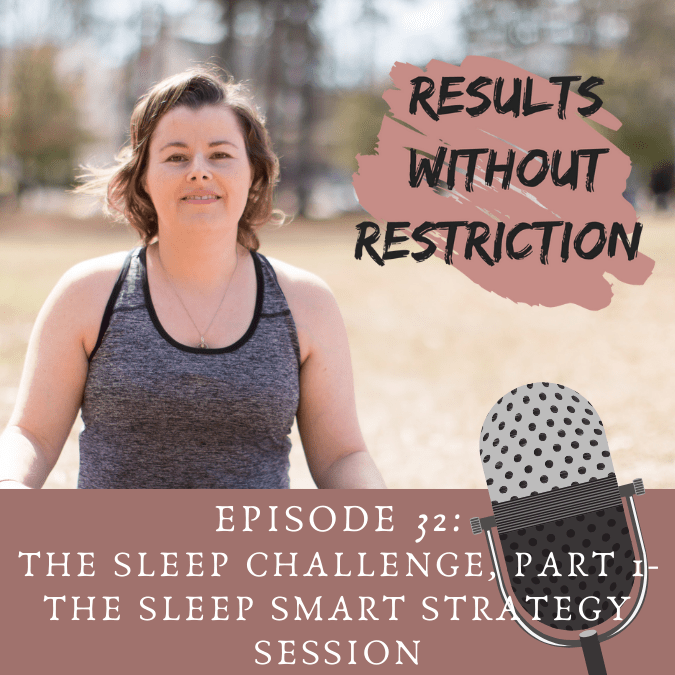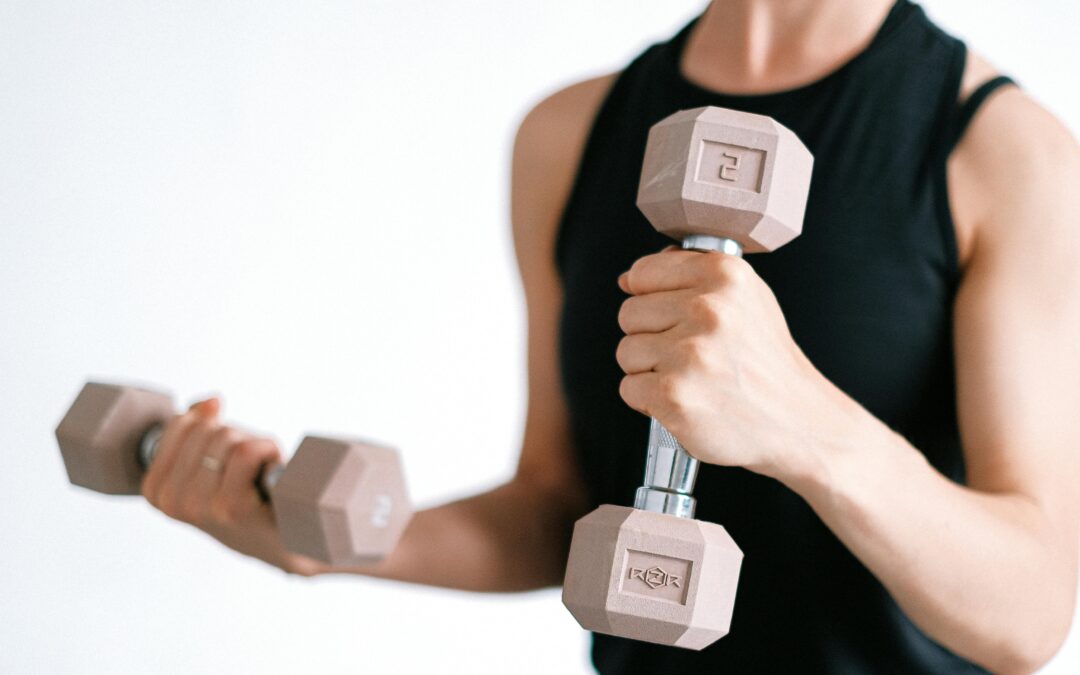Yes, there really are apps that pay me to work out! I tested the most popular ones, tracked my actual payouts, and figured out which are worth it and which to skip. If you want accountability, extra motivation, and even a little cash, here’s everything you need to know, including referral bonuses to get started faster!
[Updated for 2025] This post may contain affiliate links.
Here’s what I’m still using, what I’ve ditched, and what I won’t even consider
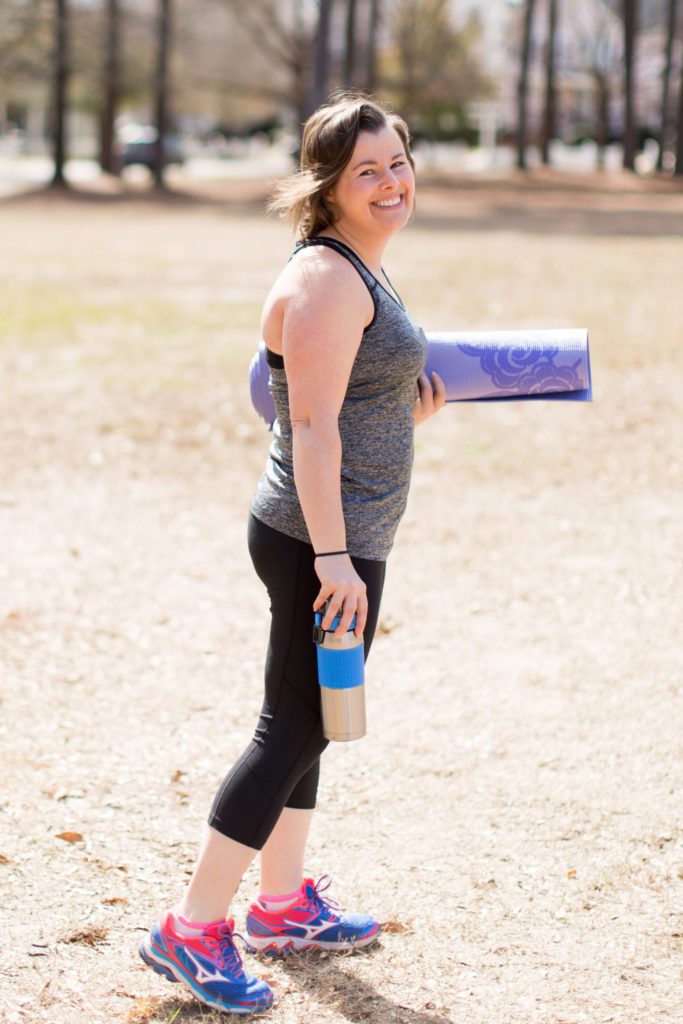
Even though I love being active—and I know there are countless benefits to staying active as I get older—I have to admit that I don’t always feel like running or lifting weights.
Before the pandemic, I had a routine I thought was unshakable. I’d drop my son off at preschool and head to the gym to meet a workout buddy three or four times a week. It worked so well, and for so long, that I assumed my fitness habit was rock solid.
Then, like so many others, my routine unraveled in 2020.
Gyms closed. Schedules shifted. And even when our gym reopened, working out in a mask didn’t feel right to me.
We made a big decision: instead of renewing our membership, we invested in a home gym.
We bought some equipment new and hit up Facebook Marketplace for the rest.
[RELATED: How to Set Up a Fully Functional Home Gym and Workout Space]
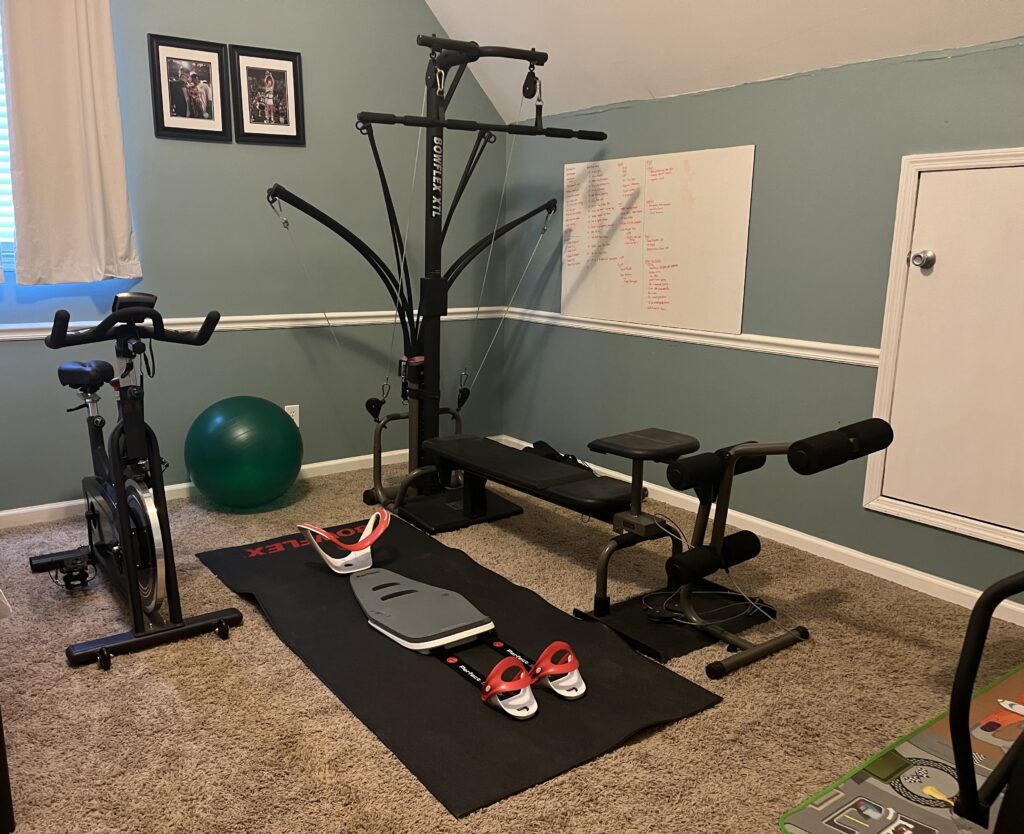
Our Home Gym Equipment List:
- Bowflex SelectTech adjustable dumbbells (AMAZON)
- an elliptical machine (like this one on Amazon)
- a Bowflex workout machine. They don’t make this one anymore – it’s vintage! 😀
The closest thing Bowflex makes now looks like this one (Amazon). - I also bought an exercise bike from a friend who wasn’t using it any more (it’s just like this one on Amazon)
See my Perfect Sit-up thing-a-majiggy device?
They don’t make this model anymore (not sure if that’s a bad sign?) but I actually love the Perfect Sit-up because it puts your body in the perfect position to reduce head and neck strain while doing crunches.
My husband had it hanging around in his Monica closet, along with Perfect Pushups and some kettlebells and DVDs.
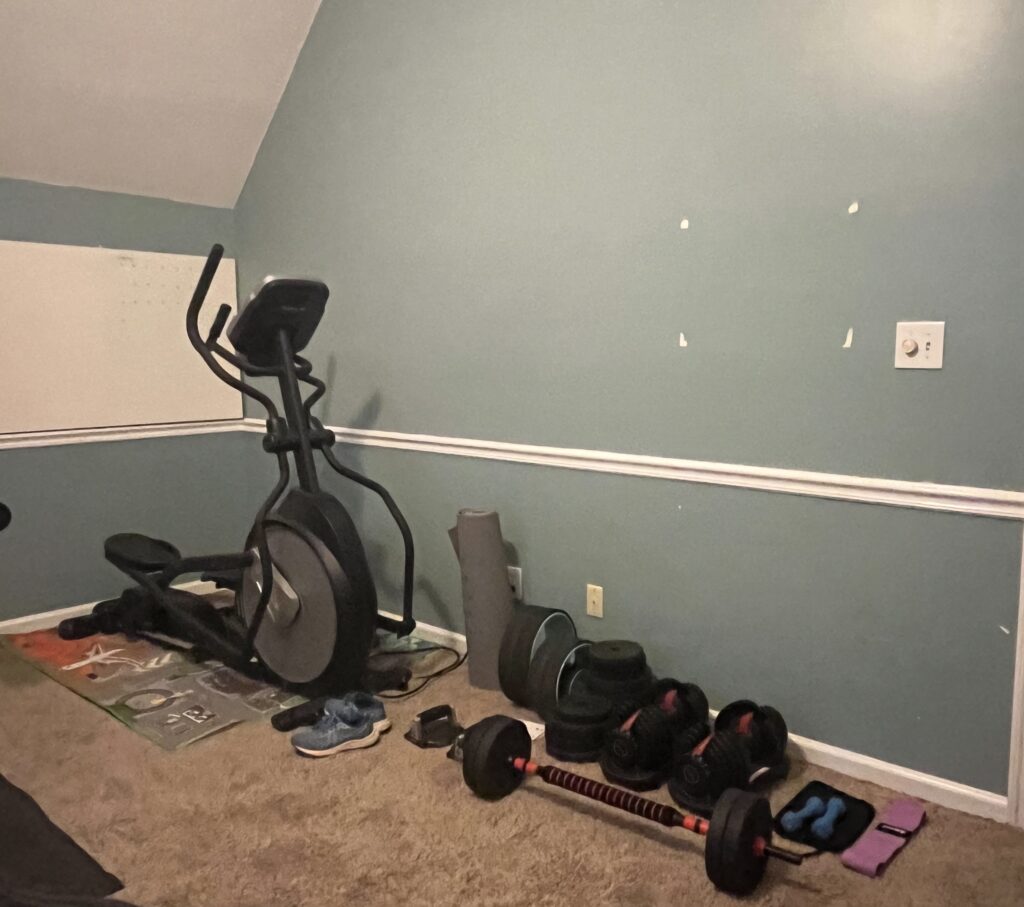
I was pretty confident that having a full gym conveniently located in my house would mean we’d be working out all. the. time. and back in our routine of regular activity.
Nope.
I tried all kinds of rewards and motivational tricks to get myself into a regular routine using my home equipment but I couldn’t do it consistently.
Once I was in the workout room, I had no problem doing the workout. The hard part was getting in there in the first place.
Even though I wanted to work out—and had everything I needed—it was hard to build that rhythm again.
I couldn’t understand it since I enjoyed working out, it was ridiculously convenient, and I had plenty of equipment to keep my workouts interesting.
Nothing worked.
Why Was I Struggling to Be Active?
My fitness habit hadn’t been as solid as I thought.
I realized that the missing ingredient wasn’t the convenience, or the assortment of available equipment.
It wasn’t enough for me to want to work out. The missing ingredient was the accountability of working out with my workout partner that I’d meet at the gym a few times a week.
I actually needed someone to SEE me and be part of my workout program with me in order for me to actually do it. (I learned recently that the term for this is ‘body doubling’ and it’s a very common strategy used by people with ADHD to complete tasks.)
The First Step to Get Moving Again
What finally helped me become more active on a daily basis was joining my first StepBet. Before this I had no idea I’d find apps that pay me to work out!
Now, in case you’ve never heard of it, StepBet is an app that offers paid challenges with the possibility of earning the entry fee back if you reach the daily and weekly personalized step goals, which are based on your own activity tracker history, until the end of the challenge.
As soon as there was some kind of visibility of my workouts and public accountability for reaching my daily step goal, I had a much easier time getting back into a regular activity habit.
I started joining multiple bets at one time, figuring if I was doing the work for one challenge anyway, I could be winning other challenges simultaneously and tripling my earnings.
Then I thought, if I was already moving, but maxed out on how many StepBets I could participate in at one time, I should find some other apps to earn rewards for the activity I was already doing.
What Makes a Reward App Effective?
I downloaded a LOT of apps. Anything that required taking surveys and claiming ‘coins’ or movement credits daily got deleted. I didn’t want to have to remember to log in and do some activity inside the app every single day.
After some trial and error I learned that my preferred apps that pay me to work out had certain features. These features were more effective than others to motivate me to move.
My favorite apps that pay me to work out had the following features:
Gamification
They made consistency feel like a game—badges, streaks, daily targets. It wasn’t about intensity, it was about showing up.
Cash and Gift Card Rewards
These are the apps that award points for activity and then give you the option to cash them in for actual cash or e-gift cards. Yes, the rewards are small. But even a $5 gift card feels like a little high five.
Loss aversion
The fact that I’d put up some cash (even a small amount!) and I’d only get it back if I met my goal was a surprisingly good motivator. I was surprised how much I was willing to exert myself to NOT lose $10!
Public accountability and activity visibility
Even if it was strangers in a challenge group, just knowing someone might see my activity helped.
So with that in mind, here are the five apps that pay me to work out that I’ve personally used and how they stack up in 2025.
How I Use These Apps (And What You Should Know)
I use these fitness rewards apps as a motivational tool, not a moneymaker. Sure, a few dollars or gift cards here and there are fun, but the real payoff is consistency, energy, focus, and the mental health boost that movement brings.
I intentionally avoid apps that require weight loss to earn rewards, because:
- Intentional weight loss isn’t sustainable for most people – studies show at least 80% of people pursuing intentional weight loss will regain the weight (plus more) within 5 years.
- Weight cycling (the repeated action of losing and gaining weight) actually increases health risks, especially heart disease (the #1 cause of death in women).
- The research promoting weight loss as a health metric often comes from the multi-billion dollar weight loss/diet product industry (directly or indirectly), which is profits off of women (in particular) feeling insecure and pressure to fit an arbitrary body shape/size/weight
- And most importantly? Your health is not defined by your weight.
That said, I mention those apps for transparency because we all have body autonomy. If you’re drawn to them, just proceed with informed caution, and don’t base your worth on a number.
Accessories That Make Earning Easier
You don’t need fancy gear to get started but these tools can help you track steps, stay consistent, and make the most of your movement.
My Favorite Apps that Pay Me to Work Out
Before I get to individual reviews, I’ll share a quick comparison table.

Favorite apps that pay me to work out #1 – Evidation
This app rewards you with points for health-related actions: steps, sleep, short surveys, and even reading articles. It syncs with my Apple Watch and runs quietly in the background.
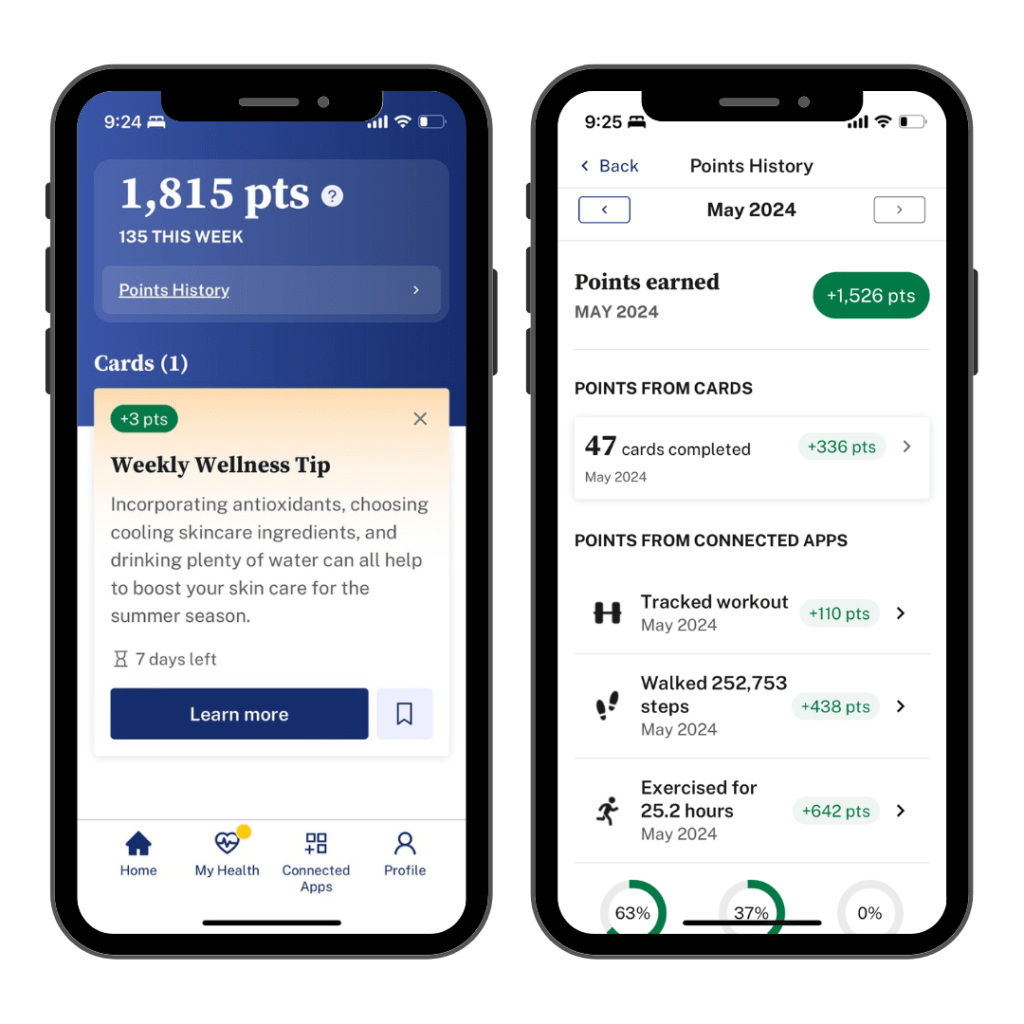
Earning Evidation Rewards
Once you hit 10,000 points, you can redeem them for $10 or donate to charity. I average one payout every 3–4 months without much effort.
My Take: This is the most passive and easiest-to-use app. Perfect if you want to earn with no stress.
Reward: $10 every 10,000 points (I can earn this 3–4 times per year)
Between my activity points and the points awarded for answering short surveys and reading articles, I usually accumulate enough points to earn my $10 reward in 3 to 4 months.
Out of all of the apps that pay me to work out, this one is the easiest (and cheapest!) to use.
App Summary:
- Reward Type: Cash ($10)
- Avg. Payout: Every 3–4 months
- Cost: Free
- Best For: Passive earners

Favorite apps that pay me to work out #2 – Paceline
This app also awards points for tracking your activity. When I first joined Paceline in 2022, I would earn a $1 Amazon gift card for completing 150 minutes of activity per week.
There was also an option to save up your points and cash in for a higher value gift card at other places, like Starbucks, or redeem them for discounts on the health and wellness products available in the Paceline Marketplace. It doesn’t sound like a lot, but it was $52 a year to spend on Amazon, which I was going to do anyway.
Because of this Paceline was one of the top apps that pay me to work out.
However, in 2023 things started to go downhill.
First, they changed their points and rewards program to “Pacepoints” and they took away the Amazon gift card option.
You could earn 400 “Pacepoints” if you complete 50 minutes of activity per week, 800 additional “Pacepoints” if you complete a total of 150 minutes of activity per week, and 300 bonus “Pacepoints” if you complete a total of 300 minutes of activity each week.
This maximum number of points you can earn in one week is 1500 points.
In terms of cashing your Pacepoints in for giftcard rewards, my best options were to cash in 24,000 points for a $5 Starbucks or Adidas gift card or 35,000 points for an $8 Spafinder giftcard.
As of 2025, they’ve completely removed all gift card redemption offers.
Instead, you can now either redeem your Pacepoints for discounts on products in their in-app marketplace OR for credits to spend on the products in their in-app marketplace.
The problem?
Many of the marketplace items are not from any brands I’d ever heard of and the products were relatively expensive. Some of the prices weren’t much of a discount at all compared to the vendor’s direct website.
For example, the Garmin Forerunner was listed at the exact same price in the Paceline app as on Garmin’s official site.
There’s also a “Mystery Gift” option that promises a chance at prizes ranging from a $5 credit to a $250 Amazon gift card. Since I knew I had no use for using the points in the Marketplace, I went ahead and redeemed 18,000 points for the Mystery Gift option that indicated I could claim a prize up to $250 in value just to see what I’d get.
Disappointment, that’s what.
I received a $5 Paceline marketplace credit. The exact same reward I could have gotten by redeeming 10,000 points.
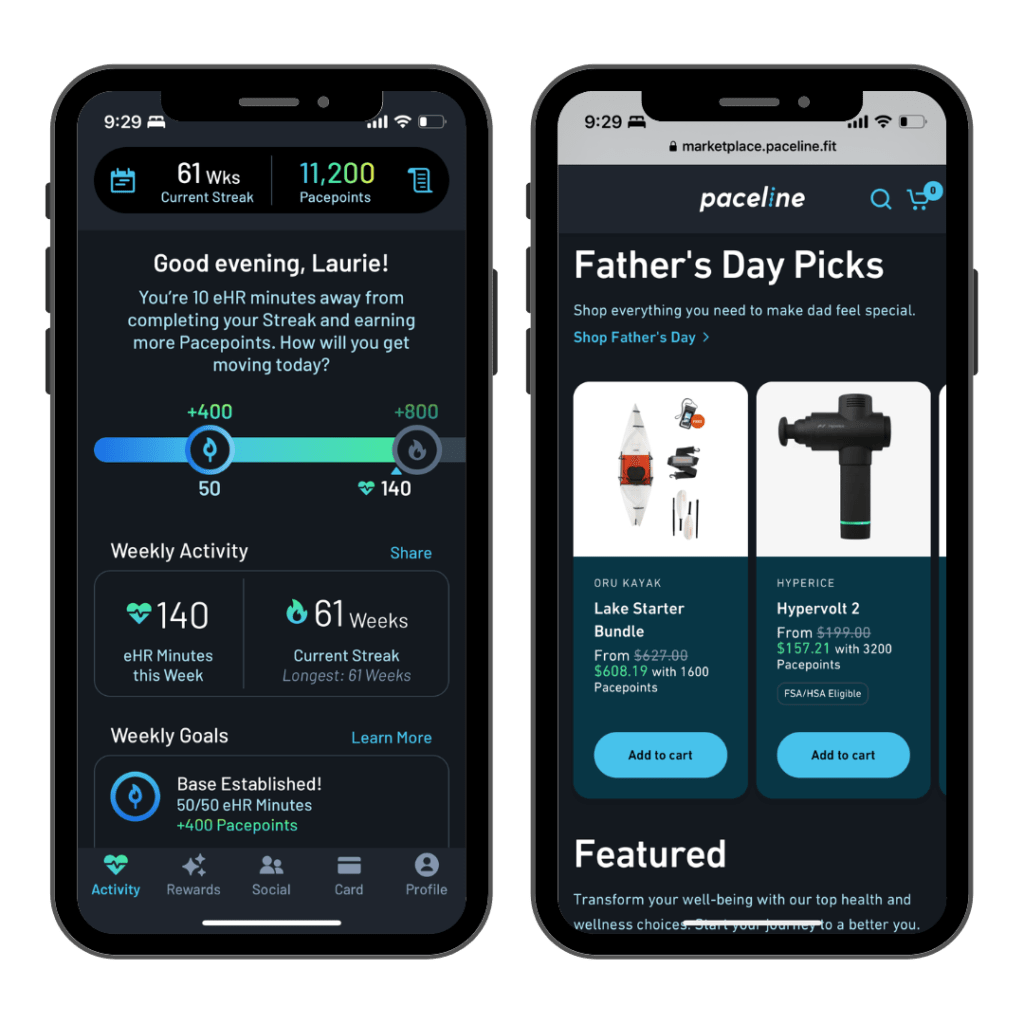
Do some quick math, you can see this wasn’t a change for the better. I used to be able to earn $52 in Amazon gift cards each year. Then it took me 16 weeks to earn a $5 gift card to Starbucks.
Now I earn points and have no use for them.
At this point, Paceline has dropped to the bottom of my list in terms of earning potential. I still keep it synced for the habit-tracking features, badges, and streaks, which give me a little boost to stay consistent, but of all of the apps that pay me to work out, this one offers the least incentive.
The Reward I choose: a $5 Starbucks GC every 4 months.

Favorite apps that pay me to work out #3 – Dick’s Sporting Goods – Scorecard App
The Dick’s Sporting Goods ScoreCard app rewards you for both purchases and physical activity.
By linking a fitness tracker, you can earn up to 3 points per day by doing any of these 3 things:
- Reach at least 10,000 steps
- Complete at least 3 miles
- Complete at least 30 minutes of fitness activity
Once you reach 300 points, you earn a $10 reward certificate to use at Dick’s Sporting Goods.
There are no upfront costs, and the basic ScoreCard membership is free.
You can also earn points by shopping, participating in DSG-sponsored events, or using the ScoreRewards credit card (optional).
It’s one of the easiest fitness rewards programs to use, and it’s valuable if you already shop at Dick’s or buy activewear or fitness equipment regularly.
Key Benefits:
- Combines shopping and movement rewards in one place
- Free to join
- Daily movement earns you store credit
- Syncs with Apple Health, Fitbit, and other trackers
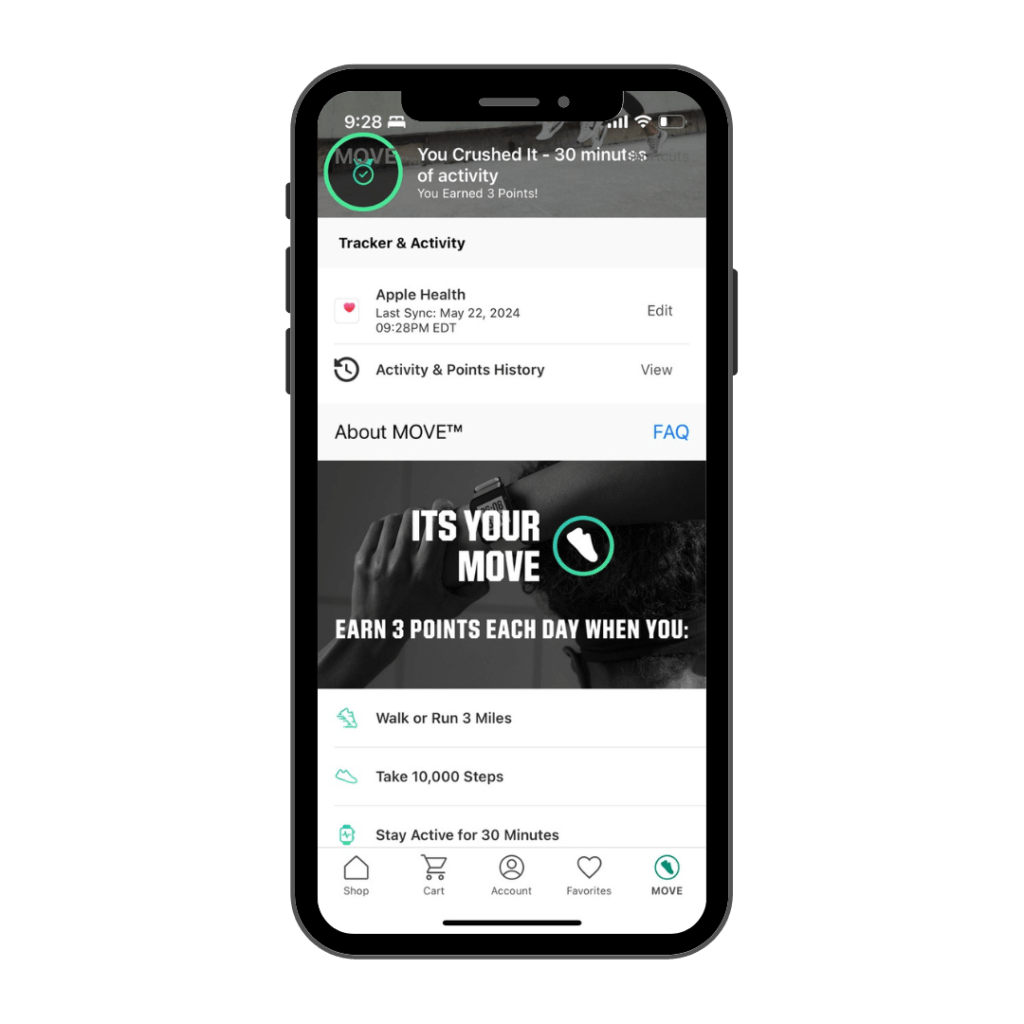
I can usually accrue the 300 points for the $10 reward in about 100 days.
- Reward Type: Store credit ($10)
- Avg. Payout: $30/year (avg)
- Cost: Free
- Best For: Bonus rewards for daily movement
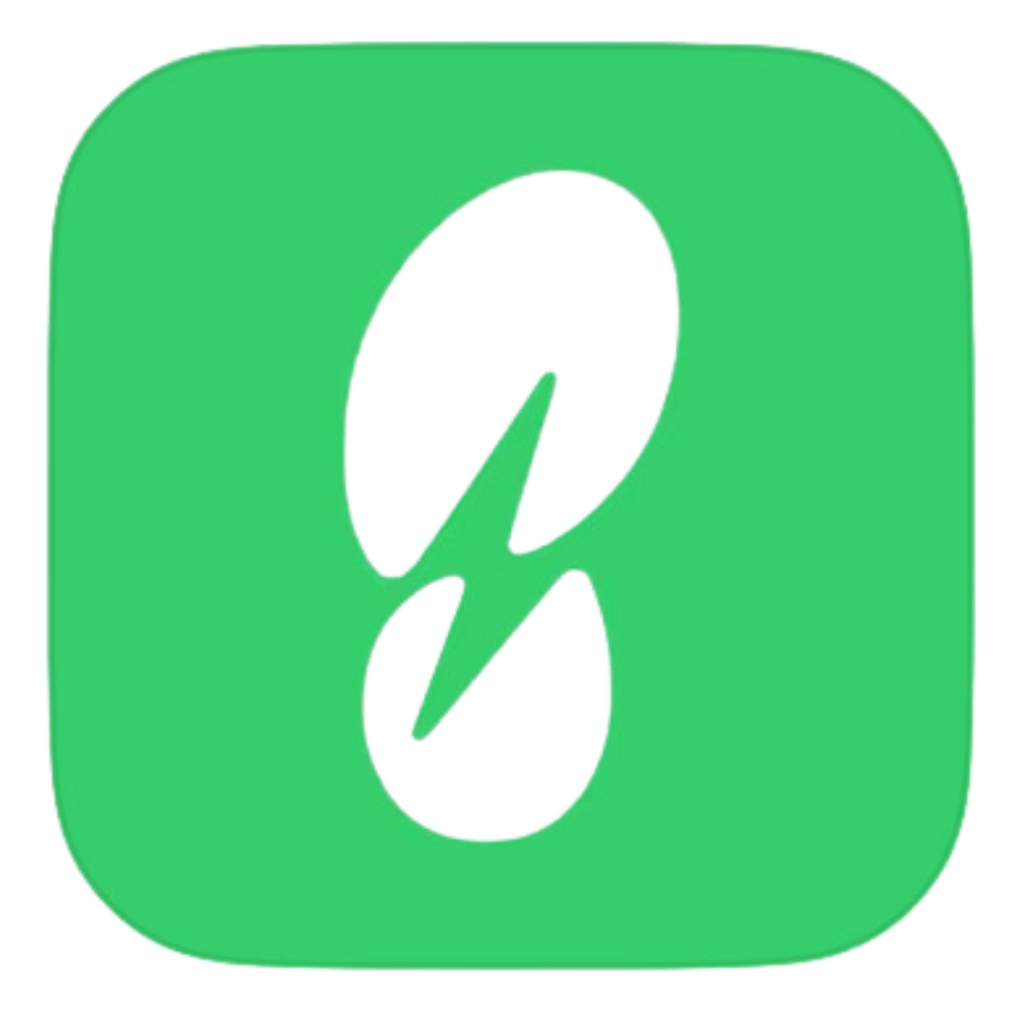
Favorite apps that pay me to work out #4 – Stepbet
This is the app that started it all for me. This app only has games based on step count. The games vary in intensity and duration. The platform creates simple, personalized StepBet workout routines based on your fitness tracker data, encouraging you to meet weekly step goals. If you stay consistent, you earn a share of the prize pool — a fun way to stay accountable and earn real rewards for moving your body.
StepBet has a community feature that allows you to post comments during the bets and cheer each other on. Even though this app is only tracking steps.
Some games give out awards at the end for the member who invited the most players to participate or the member who provided the most support to the community. Some games have drawings at the end for health and fitness related items such as a pair of walking shoes.
StepBet membership is $59.99 per year and allows members to play up to 3 games at once and provides access to exclusive member-only games with prizes and unique challenges.
Because the Step Goals in each challenge are based on my own step history, the goals are within the range that I feel comfortable walking on a daily basis. Most games include a Power Day, which is when the daily step goal is about 20% higher than a normal Active Step day.
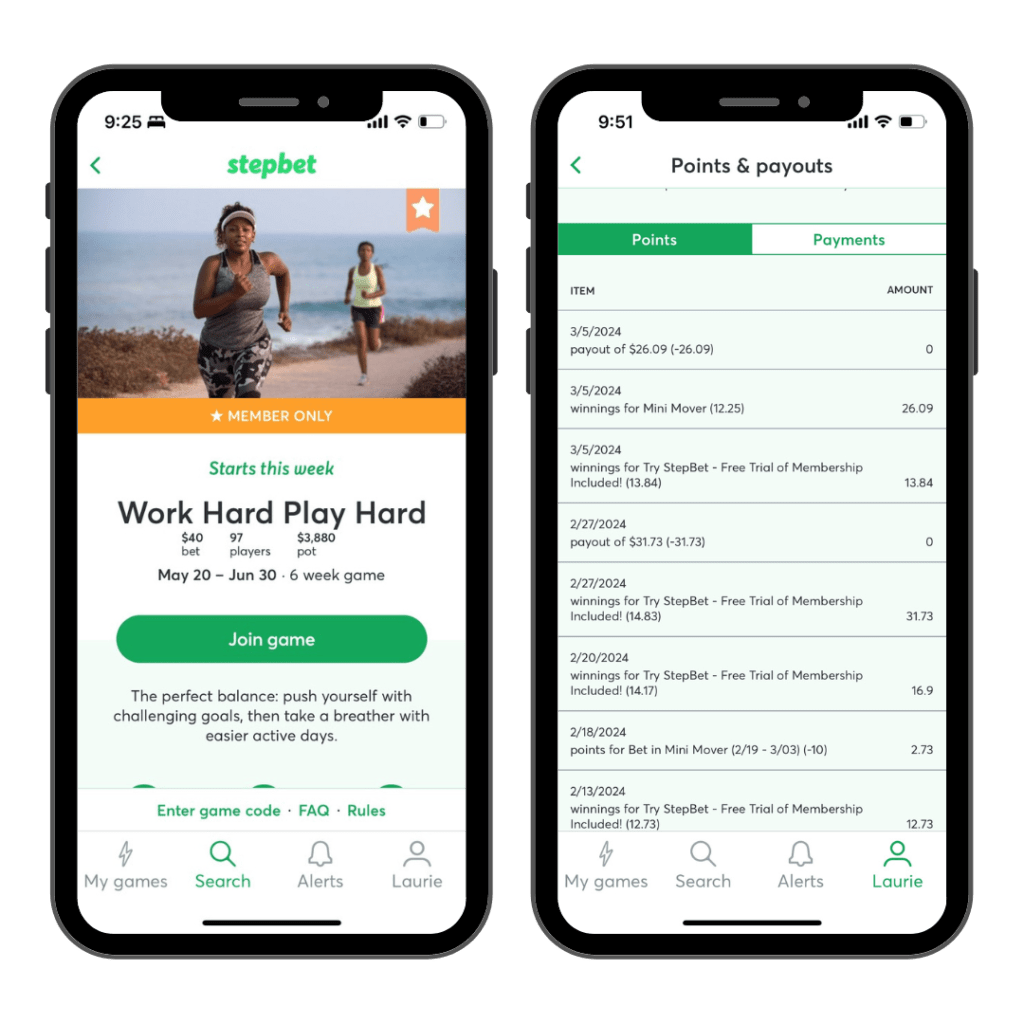
What does become an issue is that the longer you do these StepBets, the more your Step goals increase with each game. I found it necessary to take breaks every 6 or 7 games or so in order for my average daily step count to drop down to a level that was realistic with my schedule. I usually join the 3-week/$10 bet games and the winnings are usually between $12 and $15 per game, which is a 20-50% return on my investment.
- Reward Type: Cash pool split
- Avg. Payout: $6–$20/month
- Cost: $10+ per game or $59.99/year
- Best For: Accountability + step consistency
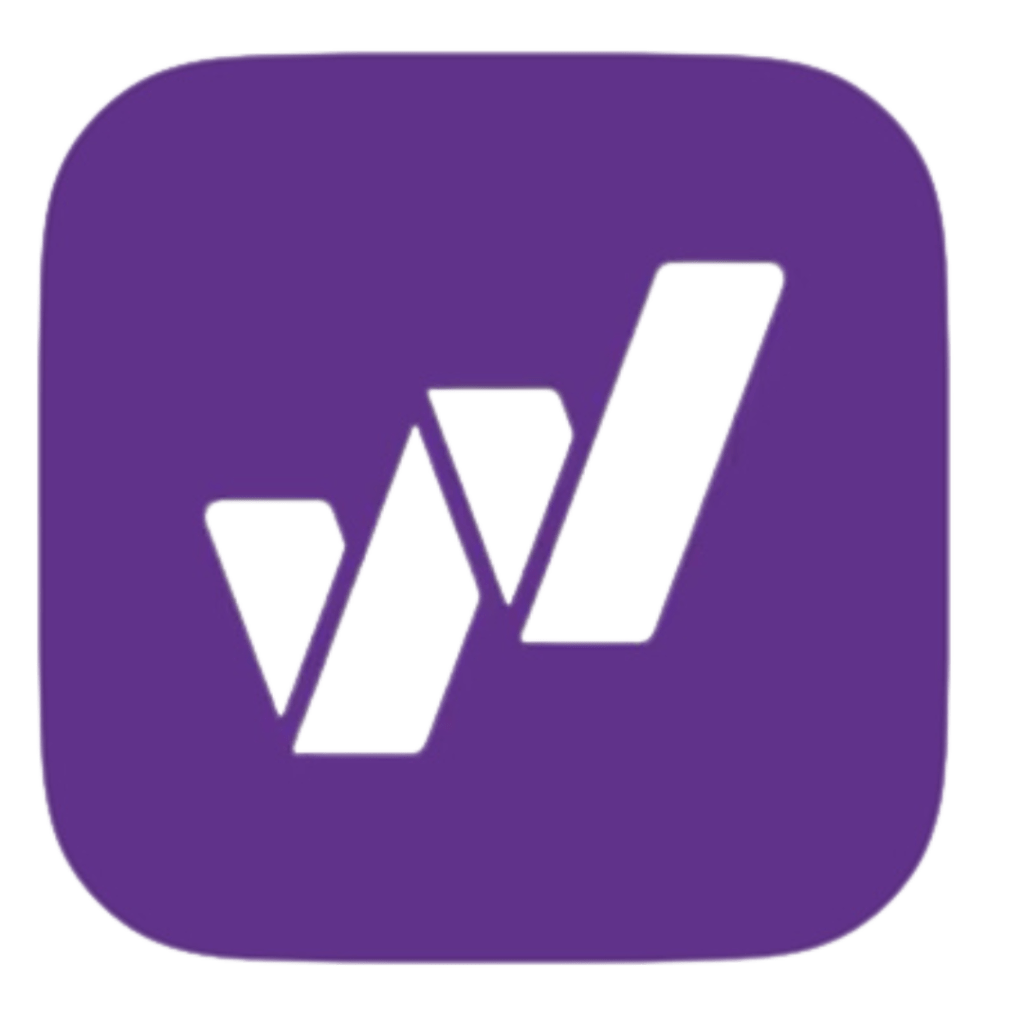
Favorite apps that pay me to work out #5 – WayBetter
From the same folks that offer StepBet, this app offers a much wider variety of games focused on different areas of health such as nutrition and mindset, not just fitness. Games include activities such as running, drinking water, reading books, eating fruits and vegetables, meditating, and strength training.
I don’t love that this app mentions weight loss as a way to promote better health, BUT I will give them credit for branching out beyond DietBets, where they only use the scale to measure progress. It’s several steps in the right direction and I’m hopeful that they’ll continue to shift their focus away from weight as a measure of progress.
What I like most about this app is that they offer a wider variety of games, and they games can be quick and cheap. For example, I can participate in a 2-week game for as little as $10.
How it works:
- For each game, the participants’ entry fees go into one big pot.
- If you lose the game by failing to meet the requirements for the duration of the game, your money stays in the pot.
- If you win the game by meeting all of the game’s criteria you’ll get your money back PLUS your share of the pot left over by the participants who lost the game.
So if I win my game, I not only get my initial investment of $10 back, but I also win a share of the entry fees that were forfeited by participants that lost the game.
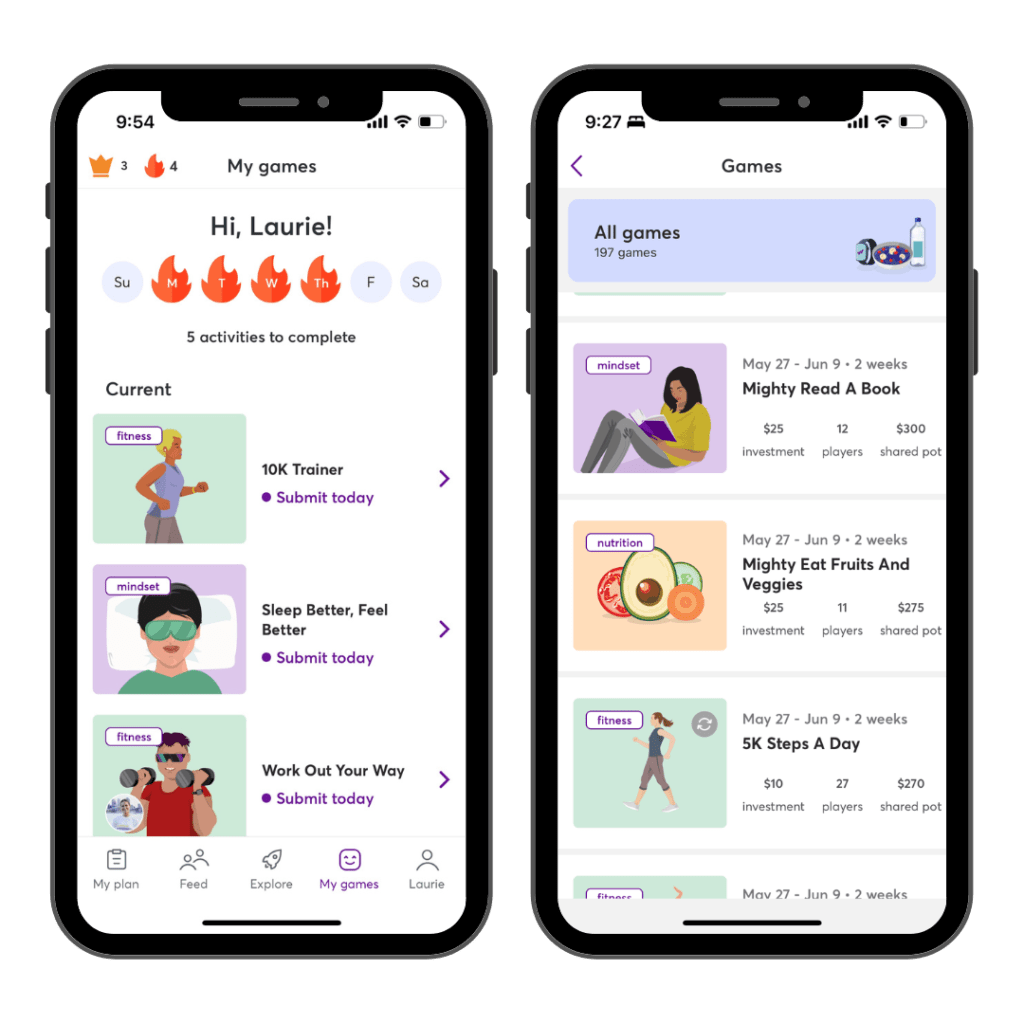
Game duration can be from 1 to 8 weeks and cost anywhere from $10 to $100.
Personally, I prefer the $10/1-2 week games because of the quick turnaround.
Participation in the WayBetter games does require a 6-month membership fee of $68.99.
Members can participate in up to 10 games at a time.
Strategy Tip: Maximize Your Earning Potential
If you’re serious about making back your membership fee (and then some), your best bet
- Join shorter games (1–2 weeks) that you’re highly likely to win, especially if they align with habits you’re already doing, like daily walks or logging meals.
- Stack up to 10 low-cost games at once and aim for consistent wins. This gives you more chances to earn small payouts that add up over time.
- Choose games with simpler rules, fewer players, or higher difficulty — these sometimes lead to larger payouts if fewer people finish.
PLEASE NOTE: This is just an example strategy based on my personal experience. Results vary and there’s no guarantee you’ll earn a profit. Game payouts depend on participant count, difficulty, and how many others finish successfully. Only join games you’re confident you’ll complete and make sure it’s fun, not stressful.
The Reward: My $10 games have ended with anywhere between a $12 – $16 payout and my most recent $25 game had a $32 payout.
- Reward Type: Cash pool split
- Avg. Payout: $1-$3 per game
- Cost: $10+ per game and membership fee of $68.99/6mo
- Best For: Variety of habit-based challenges
Apps I Added to My List
The original version of this post focused on the most well-known apps that pay you to work out—especially ones I’ve personally tested. But after reviewing what’s available in 2025 and hearing from readers looking for lower-commitment or less-competitive options, I decided to expand the list. These additional apps don’t require joining paid challenges or competing against others. Instead, they quietly reward you for simply moving your body, checking in, or supporting a cause. They’re not all cash-based, but they still offer meaningful motivation and can be a great fit depending on your goals and personality.
CashWalk
Best for: Step tracking
Payout: Gift cards via coins earned for daily steps
Why I Recommend: Download the app, walk, and earn. No manual input or games required. Great if you just want to be rewarded for moving more.
Try CashWalk with this invite code.
Sweatcoin
Best for: Non-cash but tangible rewards
Payout: Redeem Sweatcoins for products or donations
Why I Recommend: Long-time favorite with global use. Perfect if you like saving up for occasional perks or supporting causes.
Sign up to earn Sweatcoins for your steps.
Macadam
Best for: Social and mental wellness accountability
Payout: Gift cards via points
Why I Recommend: This newer app encourages daily check-ins and reflection, not just physical activity. Great for people who want well-rounded habits and gentle encouragement.
Get started on Macadam here.
Charity Miles
Best for: Moving for a cause
Payout: Donations made to charities on your behalf
Why I Recommend: Every mile earns money for causes you care about. No strings, just purpose.
Download Charity Miles and pick your charity.
WinWalk
Best for: Simple, no-fuss step tracking
Payout: Step-based coins redeemable for gift cards
Why I Recommend: Low-maintenance and totally free. Just let it run in the background.
It’s ideal if you don’t want to mess with games, timers, or check-ins — just walk and earn. That said, rewards can be slow to accumulate, so it’s more of a gentle nudge than a true side hustle
MyWalgreens Health Goals
Best for: Walgreens shoppers
Payout: Walgreens Cash for completing health goals
Why I Recommend: If you shop at Walgreens, this is a simple way to earn cashback while building small health habits.
Connect to MyWalgreens Health Goals.
TreeCard
Best for: Eco-conscious users who want to earn rewards and plant trees
Payout: Trees planted + access to perks via points
Why I Considered It: Treecard is more of a lifestyle app than a fitness reward app. It tracks steps and converts them into environmental impact (like planting trees). While it’s not focused on personal financial rewards, it’s a meaningful option if you’re motivated by purpose rather than payouts.
Is It Worth It? Can You Actually Make Money with These Apps?
Yes — but with a few caveats. Most fitness reward apps don’t offer life-changing payouts, but they can give you a solid dose of motivation and a small cash bonus if you’re already working on healthy habits.
Realistic earnings: Most games or challenges return $1–$3 above your entry fee, depending on how many people win or lose.
Membership fees: Some apps require a recurring membership (like $68.99 every 6 months), so you’ll need to consistently participate and win to come out ahead.
Best strategy: Stack multiple low-cost, short-duration games. Play to your strengths — walking, working out, or tracking habits — and join games where you’re confident you’ll follow through.
[RELATED: My 6 Favorite Workout Accessories for Strength Training at Home]
The Bottom line
You can earn money, but think of these apps more as a fun accountability tool than a side hustle. If they get you moving, staying consistent, and even earning a few bucks? That’s a win.
Yes, you can make a little cash with these fitness reward apps but the real payoff isn’t in the money. It’s in the healthy habits that you build.
Incorporating regular movement into your life is one of the best returns on investment you can make.
Why? Because your health is your greatest asset. Boosting your energy, lowering disease risk, supporting your mental health, and improving focus and creativity all lead to a better quality of life and better results in everything you do.
If these apps help you stay consistent, keep you motivated, and add a few bucks back in your pocket along the way? High five, that’s a win.
Just remember, the pursuit of small payouts shouldn’t get in the way of what matters most. Have other hobbies and interests, maintain social connections, and be sure to rest!
Use these tools to enhance your life, not consume it.
Frequently Asked Questions
Do these apps work if I already have a fitness tracker?
Yes! Most of these apps sync with devices like Apple Watch, Fitbit, and Garmin. Just connect your tracker in the app settings.
Can I use more than one of these apps that pay me to work out at the same time?
Absolutely. I often stack them—using StepBet, Evidation, and Dick’s ScoreCard at the same time—to earn rewards for the same steps.
Do these apps that pay me to work out cost money?
Evidation, Paceline, and ScoreCard are free. StepBet and WayBetter require payment to join games, but you can earn your money back (and more) if you meet the challenge goals.
How much money can I realistically make using apps that pay me to work out?
It varies. Most people make a few dollars a month with StepBet or WayBetter. Evidation is more passive and adds up slowly. Paceline no longer offers meaningful rewards.
Are the rewards guaranteed?
For games like StepBet and WayBetter, you must meet all challenge rules to earn your reward. For Evidation, rewards are earned as long as you accumulate enough points.
Do I need to be super active to benefit from apps that pay me to work out?
Not at all. These apps focus on consistency more than intensity. Just walking daily or completing small challenges can help you earn and even if it’s just a tiny bit, you’ll still get paid to exercise!
What if I don’t win a game?
If you don’t meet the challenge requirements in StepBet or WayBetter, you forfeit your entry fee. It’s part of the motivation system (and why it works!).
Which app is best for beginners?
Evidation is the easiest to start with. It’s passive, free, and low-pressure.
StepBet is great if you need accountability and a bit of challenge.
Apps I’m Skipping:
HealthyWage
- Main Feature: Set a personal weight-loss goal, place a wager, and win money if you reach your goal.
- Payout: Up to $10,000 depending on the amount wagered and goal.
- Weight-Based: Entirely focused on weight loss.
- My Take: Serious accountability but not aligned with intuitive movement or weight-neutral wellness.
DietBet (by WayBetter)
- Main Feature: Join group challenges to lose a certain % of weight over a set time.
- Payout: Win back your buy-in plus share of the forfeited pot.
- Weight-Based: Requires weigh-ins and % of body weight lost.
- My Take: Tied to external measurements and short-term outcomes.
SweatBet
- Main Feature: Similar to StepBet, but based on calories burned or weight-related goals.
- Payout: Small cash rewards based on group performance.
- Weight-Based: Indirectly. May involve body weight, calorie burn goals.
- My Take: Often assumes calorie deficit equals an improvement in health, which isn’t always true. Your body is not a bank account, it’s a chemistry lab, so many other factors beyond calories factor into your health.
MyFitnessPal Premium Challenges
- Main Feature: Offers goal-based challenges (weight loss often included) tied to calorie tracking.
- Payout: Rarely monetary, more badges or perks.
- Weight-Based: Tracking and goals heavily oriented around weight loss.
- My Take: Promotes food rules and calorie fixation.
Noom
- Main Feature: Behavior-change app with heavy focus on weight loss through food logging and psychology.
- Payout: None — but marketed as “results-driven.”
- Weight-Based: Very much so.
- My Take: Marketed as sustainable, but still promotes restriction and scale-focused progress.
Final Thoughts
Even though I love being active, I’ve come to accept that a little external motivation goes a long way to get me moving. Finding these fitness apps that pay me to work out provide that extra nudge I need to stay consistent.
If you’re like me and looking for that push to get you out the door, on a walk, or in the gym, consider trying these apps that pay you to workout!
Here’s to staying active, staying motivated, while getting paid to exercise along the way!
People often search for:
- Fitness apps that pay you
- Get paid to work out from home
- Apps that reward you for walking or exercising
- Earn money working out passively
- Legit workout apps that pay
- Make money by exercising (yes, really!)
Want the real scoop? I tested all of these and share my honest results above.






